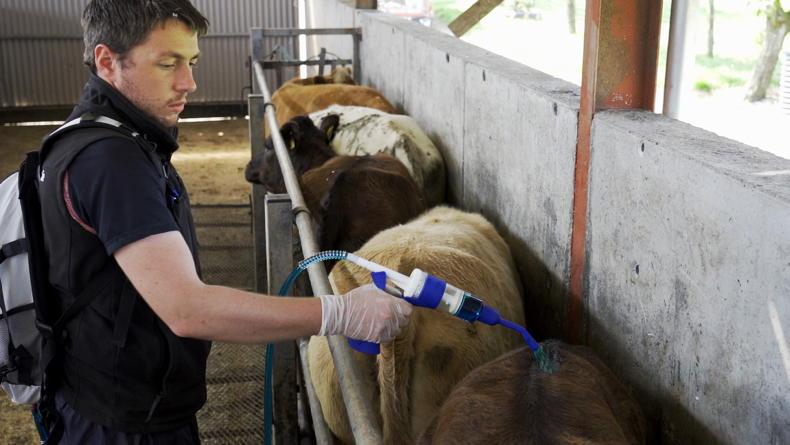“It’s worth remembering that pasture infection builds over the summer months, so by early September, young cattle may be carrying a significant worm burden,” explains Maura Langan, Norbrook veterinary adviser.
“It’s important that herd health is optimised at this time of the year, so that cattle are healthy and at a good weight prior to housing, as that will help reduce the possibility of other welfare issues down the line.”
The industry is moving towards a more responsible approach to parasite control, with cattle treated only when necessary and reducing the number of doses throughout the grazing period where appropriate.
By allowing immunity to develop in young stock and leaving adult cattle untreated wherever possible, farmers and vets aim to achieve a balance between welfare and performance and the need to preserve anthelmintic efficacy.
“We’re making real change in the way we dose cattle, especially at this time of year. A pre-housing dose five weeks before housing means that farmers are using the right product at the right time and that can maximise the benefits of late summer grass and remove the need to worm cattle at housing.
“Lungworm can be a real problem at this time of year, so an effective treatment with a persistent product will improve respiratory performance ahead of housing,” continues Maura.
Pre-housing dose: do you know the score?
Taurador® Pour-on contains doramectin, a persistent wormer that continues to protect cattle from a range of gutworms, lungworm and external parasites after treatment.
Cattle treated with Taurador Pour-On five weeks prior to housing should not need a further worm dose when they are housed.
However, they may need to be treated for fluke, depending on the seasonal risk and in line with a parasite control plan.
A fluke-only treatment is likely to be the most appropriate treatment for these cattle and also for adult cattle that have good immunity to gut worms and may not have received a wormer.

There are a range of different flukicides on the market and they are generally classified according to the stages of fluke they are effective against.
For this reason, it is important that the most appropriate product is used at the correct time in the fluke season.
Treating cattle with Solantel Pour-On at least seven weeks after they are housed will mean any fluke ingested just before housing will then be susceptible to treatment and therefore lead to a more complete fluke kill.
“Of course, it is always hard to predict exactly when cattle are housed, with the weather and the cost and availability of feed important factors in keeping herds at grass into the autumn.
"As a result, this protocol may need to be reviewed in cattle that are housed more than five weeks after treatment with Taurador or in cases of extreme challenge. Farmers should always seek advice specific to their farm.
“Although as an industry we are trying to reduce the number of treatments wherever possible, there will always be times of the year when cattle are more at risk of fluke and worms and should be dosed accordingly. The welfare of our cattle and the sustainability of our industry depend on it,” concludes Maura.
Use medicines responsibly. For more information, always seek advice, consult the product SPC or visit Norbrook.com.






 This is a subscriber-only article
This is a subscriber-only article





